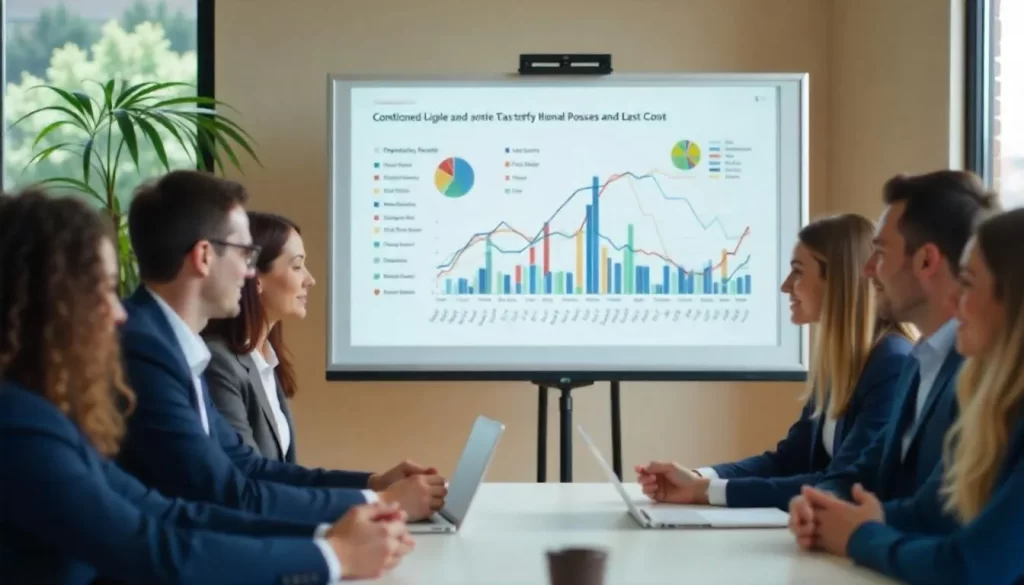Why Case Studies Tell the Real Story
Every MSP wants a website that works harder generating inbound leads, building trust, and moving prospects through the funnel. But few know what that looks like.
Having helped design, audit, and analyze dozens of MSP web design projects over the years, I’ve seen what separates “pretty pages” from lead machines. This post pulls back the curtain with real case study breakdowns of how smart design, user-focused copy, and structured journeys transform visitors into booked consultations.
These are more than examples they’re proof.
What a High-Converting MSP Website Has in Common
Across every success story, five themes show up:
- Clear positioning – Who you help, how you help, and what to expect.
- Frictionless UX – Navigation, flow, and CTA placement feel natural.
- Proof-rich pages – Testimonials, certifications, case studies, stats.
- Responsive performance – Fast, mobile-optimized experiences.
- Strategic CTAs – “Contact us” isn’t enough. Offer real engagement points.
These elements work together to build trust and drive action especially for decision-makers under pressure to outsource IT securely.

Related Posts
- Key Technologies Shaping the Future of MSP Services (2025)
- What Is an MSP and What Do They Do (2025)?
- The Role of MSPs in Cybersecurity (2025)
Case Study 1: SecureTech MSP – From Brochure Site to Booking Engine
Background: SecureTech is a mid-size cybersecurity-focused MSP with clients in healthcare and finance. Their original website was built internally with basic info, no real funnel, and vague service pages.
Problem: Their traffic was growing (via SEO and Google Ads), but leads remained flat.
What Changed:
- Rebuilt homepage with above-the-fold CTA: “Book a Free Risk Audit”
- Replaced jargon with client-driven headlines like “Protect Patient Data from Day One”
- Added a case study section with 3 real client outcomes, including quantified savings
- Integrated Calendly for direct consultation booking
Result:
Conversion rate jumped from 0.7% to 3.6% in under 90 days. More importantly, close rates improved because inbound leads came pre-qualified via content.
Case Study 2: ProActive IT – Local Focus, National Impact
Background: ProActive IT has served the Chicago area for 15+ years. Their site reflected that longevity but not conversion potential.
Problem: Their “Contact Us” form was buried, the bounce rate was 68%, and most site visitors never scrolled past the first fold.
What Changed:
- Used a clean MSP website template emphasizing local expertise (“Chicago’s Trusted IT Team Since 2005”)
- Designed service pages around pain points: “Slow WiFi?” → “Network Optimization Services”
- Added customer logos, NPS scores, and security certifications in a trust panel
- Embedded CTA after each section: “Talk to a Technician, Not a Sales Rep”
Result:
Page engagement time rose by 41%. Lead volume doubled within 60 days largely from midsize local businesses.
Case Study 3: Elevate MSP – Positioning + Content = Pipeline
Background: Elevate is a newer MSP targeting fast-growth SaaS firms. Their website had great design, but unclear messaging.
Problem: Site visitors weren’t converting because they didn’t understand what made Elevate different.
What Changed:
- Refined positioning: “We handle your stack so you can scale”
- Created 5 vertical landing pages for SaaS, fintech, edtech, legal, and healthcare
- Added gated content: “MSP Buyer’s Guide for SaaS” 38 downloads in first month
- Rewrote bios with personality and authority, turning “Team” into a conversion asset
Result:
The qualified lead count tripled in 6 weeks. The marketing manager reported a 47% lift in booked discovery calls all traceable to form funnels and content CTAs.

Related Posts
- MSP Providers in Chicago (2025)
- Steps to Selecting the Best MSP for Your Needs (2025)
- Why Businesses Choose MSPs (2025)
Case Study 4: LogicNet MSP – SEO Meets CRO
Background: LogicNet had strong rankings but weak conversion 800+ visitors/month and barely 5 contacts.
Problem: Technical SEO was great, but the user journey was broken. No hierarchy, no CTAs, and the content was thin.
What Changed:
- Rebuilt site structure based on content clustering: Services, Industries, Resources
- Added sticky CTA (“Schedule a Demo”) across the site
- Rewrote all service pages for clarity + added scroll-triggered CTAs
- Integrated trust elements: BBB badge, Google reviews, SSL banners
Result:
Conversion rate rose from 0.5% to 4.2%. For every 100 site visits, they now get 4+ qualified prospects.
Why These Examples Work
These weren’t luck. They were built on proven conversion rate optimization (CRO) principles, designed to:
- Solve specific user pain points
- Offer clear, next-step CTAs
- Provide proof throughout the funnel
- Guide visitors with content not confuse them with complexity
These examples of MSP companies show what happens when web design meets business strategy.
Key Takeaways
Great MSP websites do more than showcase services they convert visitors into real business. With the right design, content strategy, and UX structure, your site becomes a pipeline asset. These case studies aren’t anomalies. They’re the new standard.
- Design must guide not distract from conversion goals.
- Content clarity, proof, and relevant CTAs lift lead quality.
- You don’t need flashy just focused, client-driven UX.
- The best MSP websites are built for sales, not aesthetics.
- Want more MRR? Start with your homepage.
FAQs
How do I know if my MSP website is underperforming?
Check your bounce rate, time-on-page, and conversion rate. If traffic is steady but leads are low, it’s likely your UX or content strategy.
Can I use MSP website templates and still convert well?
Yes, if you customize it for your audience. Templates help structure, but it’s your copy, CTA placement, and proof that drives results.
How often should I run conversion audits?
Quarterly is ideal. You want to spot friction points and test small tweaks like headline changes or new CTAs consistently.
Is it worth investing in CRO tools for my MSP site?
Absolutely. Even tools like Hotjar, Google Optimize, or A/B testing via Elementor can reveal high-value insights and increase ROI.
